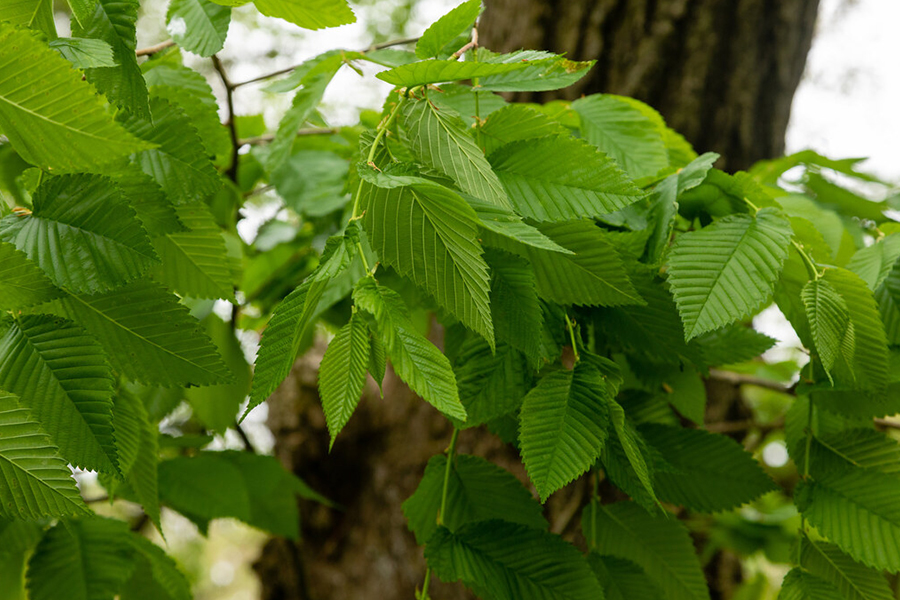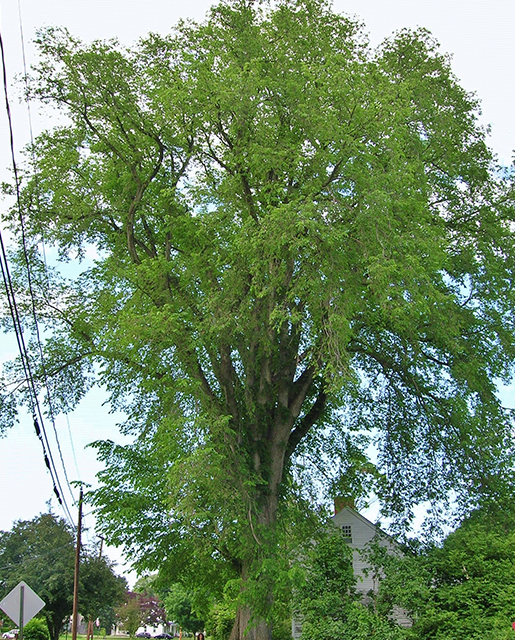Ulmus americana
American elm is a deciduous tree once widespread throughout eastern North American forests. A fungal disease known as Dutch elm disease was introduced in the mid-1900s and devastated American elm populations. Still beloved in forestry and landscaping today, many disease-resistant cultivars have been developed.
Location
There are a handful of American elms along Larch Lane.


History at Hadwen
American elms were among the species originally planted by Hadwen recorded in 1882 and 1900 alongside European and Scotch Elm. The continued presence of American elm was documented in two tree surveys conducted in the arboretum during the 1970s and again in 2020.
Keep Learning
Detailed Species Information
American elm is a deciduous tree in the family Ulmaceae native to eastern North America. In ideal conditions, the American elm can grow to 100 feet (30 meters) in height with a spreading vase-like canopy. The bark of the American elm is gray-brown with deep, uneven ridges. The oval-shaped leaves are simple, alternately arranged, and doubly serrated on the edges. The small, dark purple flowers emerge in spring before the leaves. The fruits mature as clusters of small, flat green samaras in late spring.
American elm can be found in a wide variety of habitats but thrives in the rich soils of river and stream banks, floodplains, and swamps. Historically, the American elm was a critical part of the overstory in typical North American forests. The leaves of this tree are an important food source for many species of moths and butterflies, including Mourning Cloak (Nymphalis antiopa) and Painted Lady (Vanessa cardui). Today, the American elm is Endangered on the IUCN Red List due to the fungal disease Dutch elm disease (DED), which destroyed the population in much of the United States. A highly virulent species of sac fungi called Ophiostoma novo-ulmi from Japan was discovered in the United States and Europe in the 1940s. By 1989, an estimated 75% of American elms in North America had been lost.
The wood of the American elm is coarse and difficult to work with but has niche uses in woodworking. On the other hand, in landscaping and forestry, the American elm is a prized choice despite its vulnerability to disease. Many cultivars of American elm are available, many of which are disease-resistant hybrids.
